In this post I detail the three bike pedal types available to fit modern bikes.
If you are looking for basic info, or to upgrade your current pedals, the information here will help you make an appropriate choice. I focus on the form and function of each of these key pedal categories.
If you’re a brand looking for OEM or ODM info, there’s something here for you too.
CONTENTS
- Flat Pedals
- Info for Brands
- Clipless Pedals
- Toe Clip Pedals
- Bike Pedals FAQ
- How Do You Screw On a Bike Pedal?
FLAT PEDALS – the universal bike pedal type
This section summarizes our comprehensive post on this bike pedal type.
You could also check out the post dedicated to flat pedals if you feel like a deep dive into the subject. Otherwise read on for a succinct description of the main issues.
The flat pedal is the original of all bike pedal types.
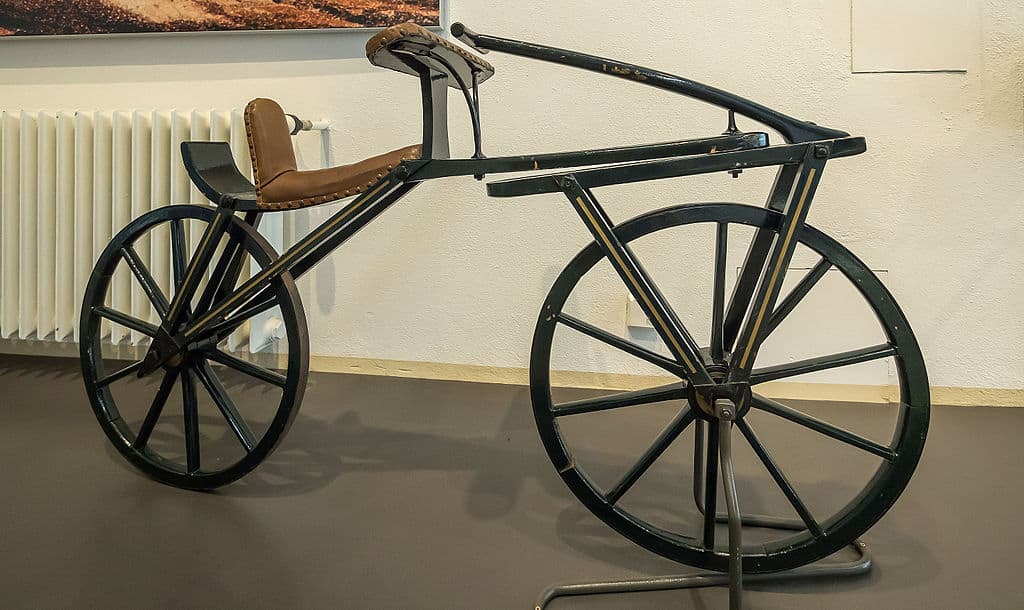
Bicycles started off in the form of the Draisine or Laufmachine—two wheels but no pedals, the same principle as the popular push bikes for very young children nowadays.
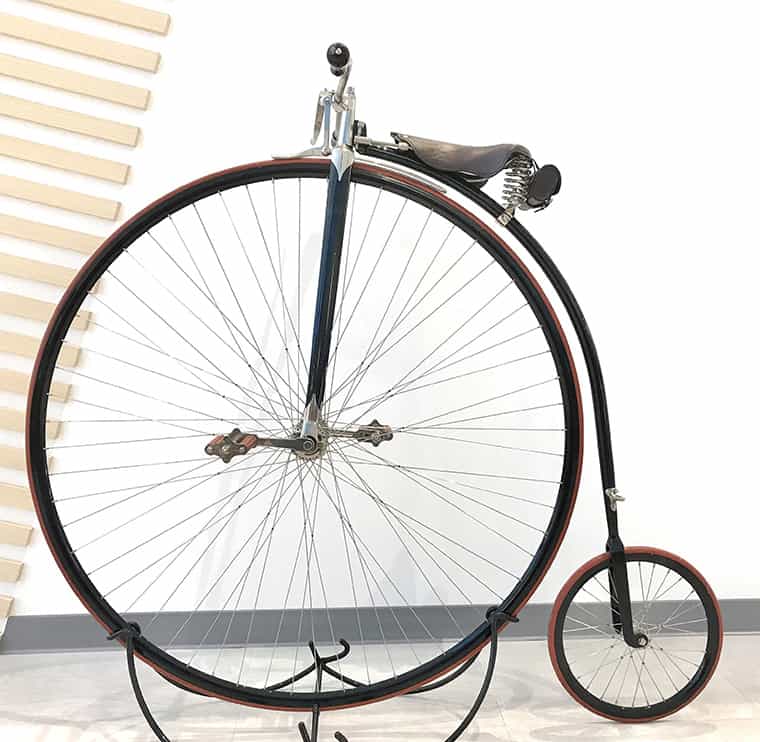
The coffee shop in Giant’s new cycling museum features a wonderful reproduction of the machine that replaced the Draisine, the High Wheeler (also known as the Ordinary or Penny Farthing)
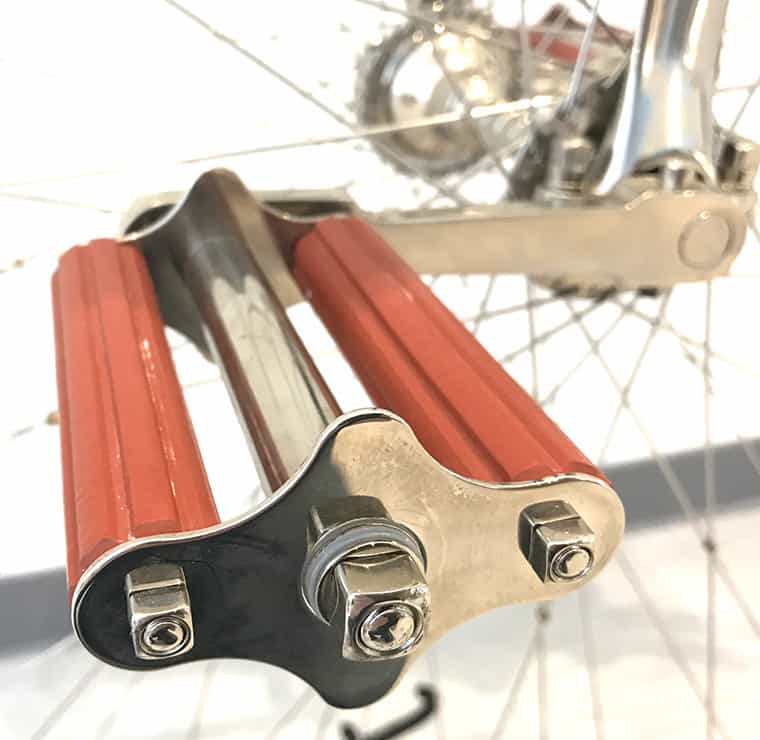
This replica of the original bicycle’s flat pedals are a familiar design: an axle with bearings around which the ‘flat’ foot supports revolve, providing a stable platform as well as leverage, for a cyclist’s foot.
Flat pedals are also called ‘platform’ pedals by the way. Cyclists and bike professionals use the terms interchangeably.
‘Platform’ is probably the better term since it conveys the technical advantage of this type of pedal: a broad, stable surface.
Road
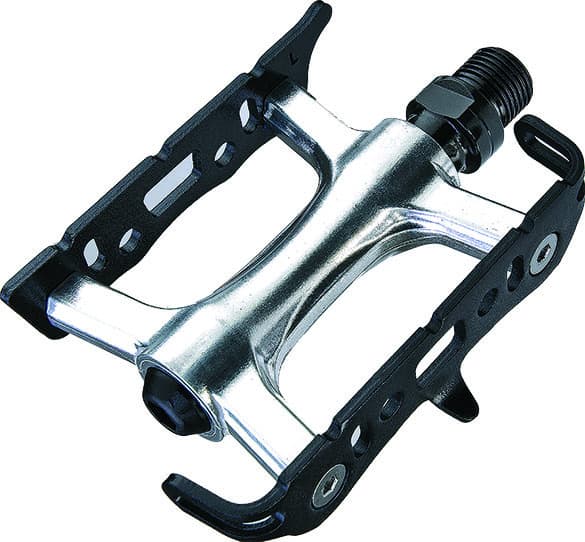
Sixty years ago, road bikes were the only bikes. The only pedals were flat pedals. Racers attached toe cages, or toe clips to the front of flat pedals early in the 20th century; but we’ll deal with that development separately below.
And for many recreational or even pro-am racers, clipless pedals are the standard (also covered below).
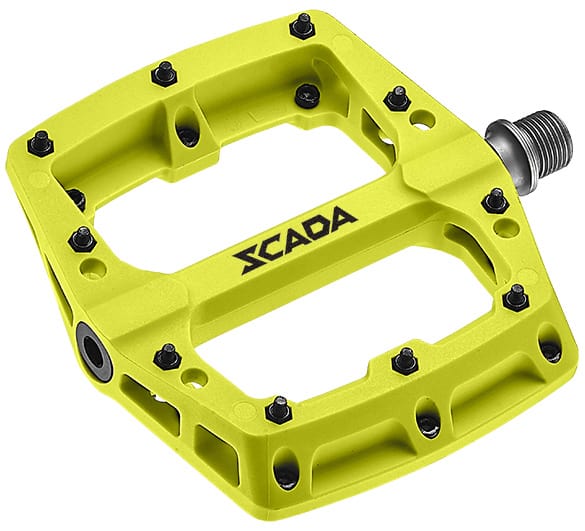
However, many road cyclists do use flat pedals. Broad platform pedals provide a stable and comfortable experience for anyone who dislikes clipping in to clipless pedals, or does not need the efficiency gains (see below).
If you do long day-rides with a group or by yourself, you’ll know the awkward feeling of hobbling around during breaks, or just to stop to check out the scenery.
A slippery surface—wet tiles for instance—increases the danger of a fall which can be just as injurious as a fall from a bike.
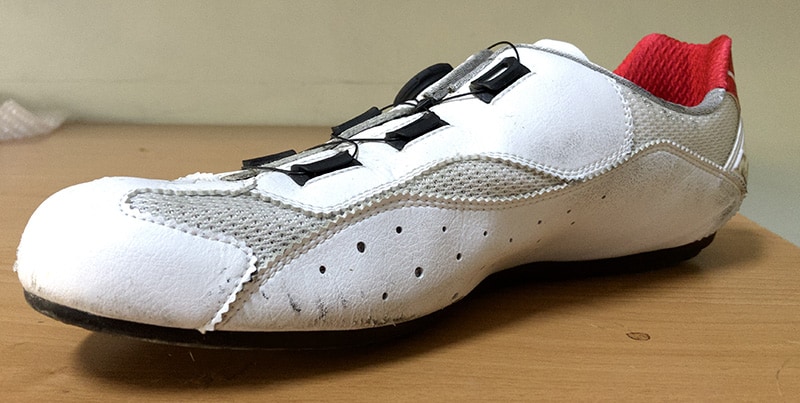
Using flat pedals in sports cycling you just need a suitable pair of flat sole sports shoes, with a narrow heel to clear the chain stays on the upstroke.
(Check out the post on 12 of the best road bike flat pedals available)
MTB
Flat pedals see their greatest use in mountain biking and bmx.
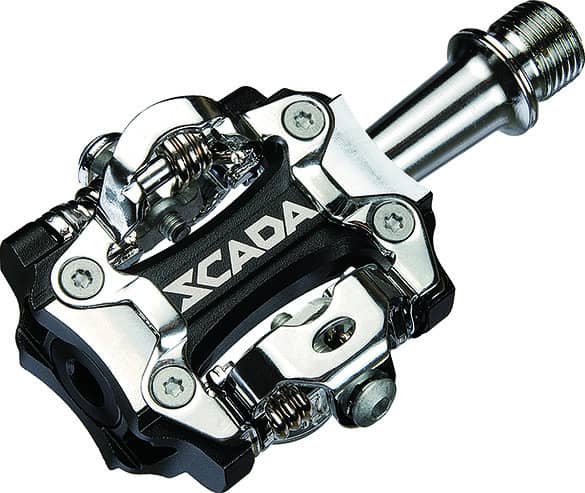
Clipless pedals are still widely used on mountain bikes, although the upstroke efficiency gain advantage is not as much as in road cycling, given the differences in terrain.
Road biking terrain varies between the flat and moderate to steep climbing on good surfaces without obstacles unlike MTB trails.
The efficiency benefit accrues by cycling with a consistent cadence over long distance.
Good Position, Grip—and Less Dirt Accumulation
The broad design of MTB flat pedals means a large surface area, which in turn could mean a much heavier pedal. But it doesn’t.
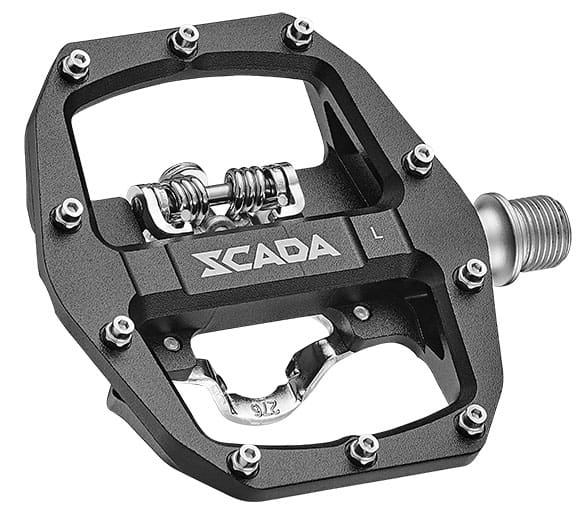
A distinctive element in flat pedal design is space; removing material from the body creates a minimalist skeleton and maximizes weight reduction.
The spaces also prevent mud accumulation of, particularly, the sticky kind that clings to components and fills cavities.
Even if a big chunk attaches to a pedal, vibration or a solid knock removes it since with space maximized, there is less surface area for mud to get a grip.
A flat pedal’s broad surface also means you can position your foot exactly where you want, depending on whether you are climbing hard or descending at speed—you don’t have that fine control when you’re clipped in.
Flat pedals with pins have been widely adopted as an alternative to clipless pedals, which connect shoe and pedal via cleats.
The broad surface provides stability; the 6 to 10 or more pins, which firmly lock into shoe tread, ensure a firm grip
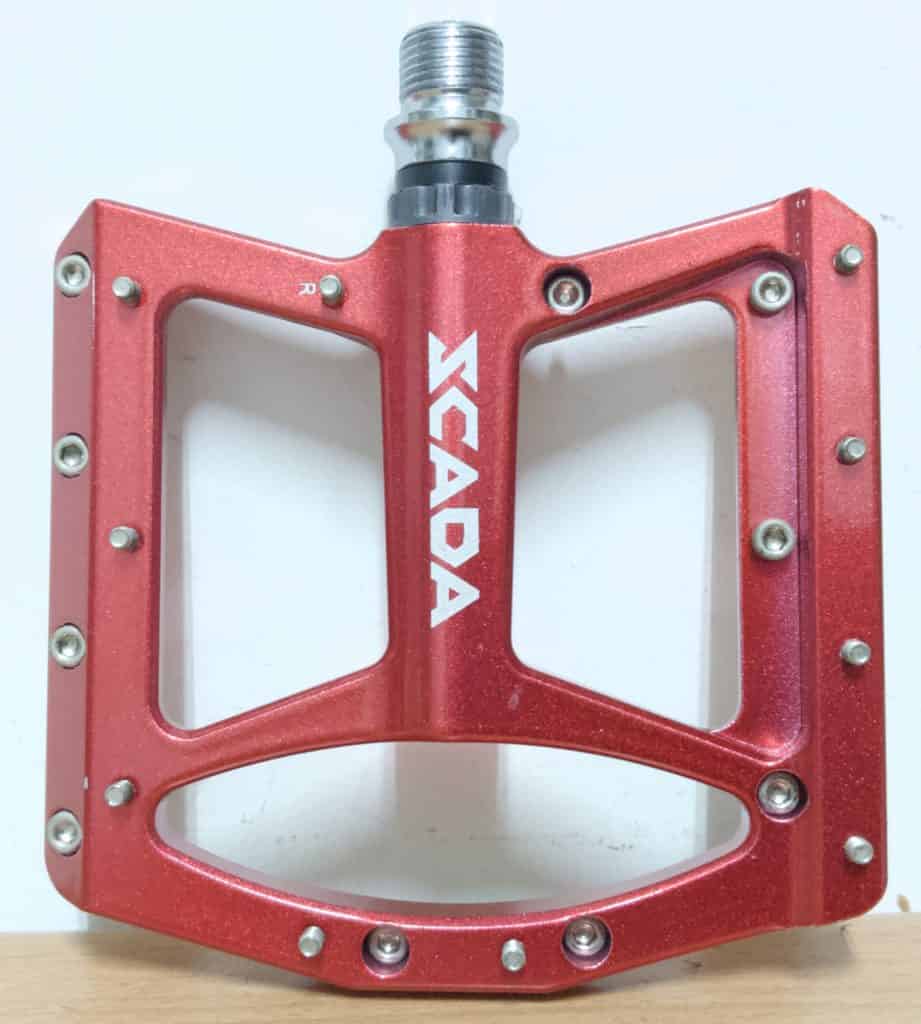
Pins can bend or break of course. So a flat pedal with removable pins makes most sense.
Even better if you can re-position the pins as with this model. Not for everyone, sure. But mountain bikers who like the ability to fine-tune their kit, appreciate being able to finesse foot positioning for one.
Pins can also tear into shins, thighs and whatever other body parts come into contact with them. The option to replace them with a shorter type, reduce the number, or remove them completely—even temporarily—makes pedals with threaded pins mighty handy.
Dual Sided
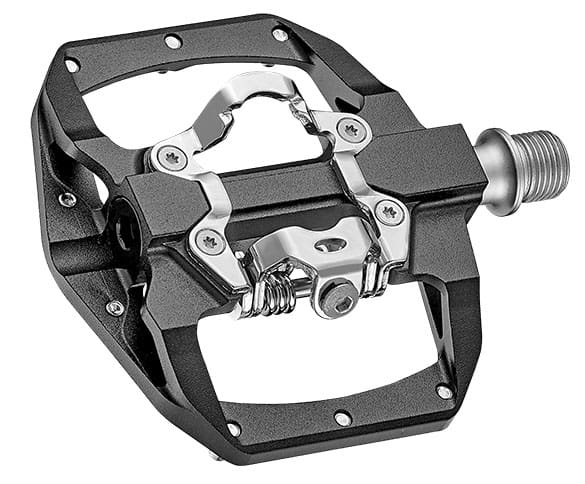
In conditions where the advantages of a clip-in cleat setup make sense, the option exists for a flat pedal with pins on one side and clip-in cleat on the other.
With a flat pedal, though, you can be assured that if you lose contact with the pedal, one face will always be available, which is not necessarily the case where there is a cleat on one side.
Because the side with the cleat bracket is heavier, it normally hangs down.
If you unclip, for instance in a crash or in a tight corner, you’ll need a moment to spin the pedal to access the bracket.
For a competitive cyclist, fumbling to re-position feet on pedals may mean the difference between the podium and no place at all.
Whether a cyclist opts for a dual-sided pedal is a purely personal decision. There’s no “better” or “best” here.
As a general observation, this type of variation in specifications amongst bike components, allow cyclists to fine-tune their performance according to personal preference.
‘Right’ or ‘wrong’ is always relative to the needs, abilities, and thus preferences of cyclists.
BMX
BMX pedals are functionally similar to MTB flat pedals.
A BMX racer must maintain foot-to-pedal contact in rapid acceleration; a street stunt rider must keep his foot firmly on the pedal through high-torque acceleration and extreme landing impacts from jumps.
CHECK OUT OUR COMPREHENSIVE GUIDE TO EVERYTHING YOU NEED TO KNOW ABOUT BMX PEDALS
Broad platforms with plenty of pins ensures minimum chance for shoe and pedal to part company under stress and during impacts.
At first glance BMX pedals are similar in design to MTB pedals with the same broad platform and multiple pins.
BMX pedals tend to have more pins and there are no dual-sided models. BMX freestylers or racers would not benefit from the particular advantages clipless pedals bring to road cycling or mountain biking.
City
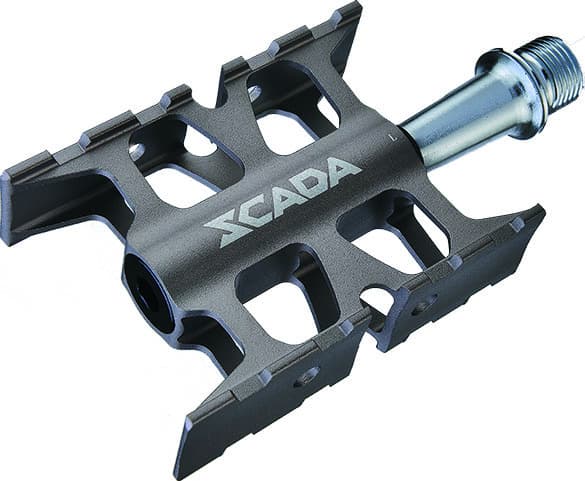
City bikes evolved from road bikes creating a comfortable, leisurely, and stylish bike for commuting short distances in urban environments.
We classify city bike pedals as pedal type in their own right; but for practical purposes they are a type of flat pedal.
The key difference to flat pedals is the lack of a broad platform. In this they most resemble the original flat pedal on the 19th century Ordinary.
Ebike
The pedals you install depends on the type of ebike.
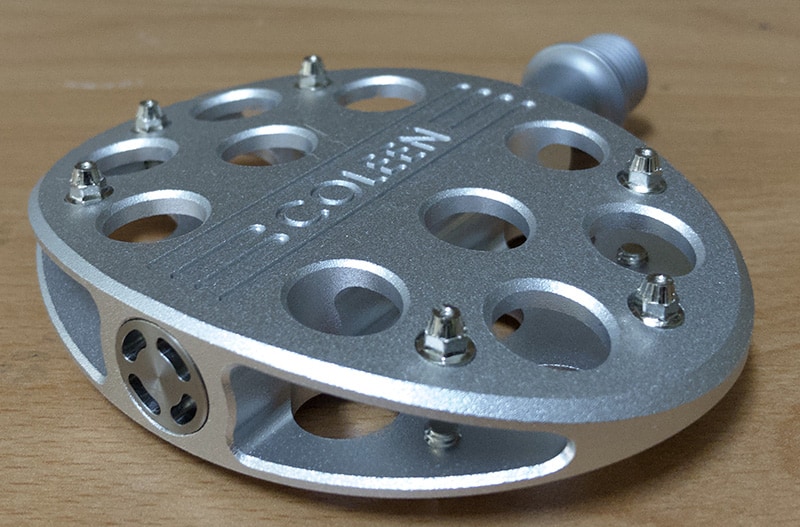
The Colleen for example is a high-end E city bike. A Colleen’s pedal—which we manufacture—is a city bike pedal with platform pedal characteristics.
Style is as important as the technical specifications, in stark contrast to eMTBs for instance.
eMTBs are for heavy duty off road trail-busting with muscle power combining with the electric assist motor in equal measure.
The best bike pedal type in this context is a broad platform with pins. Alternately, clipless pedals also do the job.
Serious sports or competitive riders can continue to use clipless pedals on E-road bikes as they would on a standard road bike; flat pedals are perfect for casual riders.
Are You a Brand?
I’ve been taking a consumer’s perspective of flat pedals up to now.
As a brand you’re looking to find that balance between keeping your customers satisfied and containing costs.
At SCADA we work with that dilemma all the time; we’re always on the lookout for ways to make it easier for brands to bridge the gap between costs and needs.
For example, die-cast pedals are cheaper to produce, but up until now couldn’t be anodized.
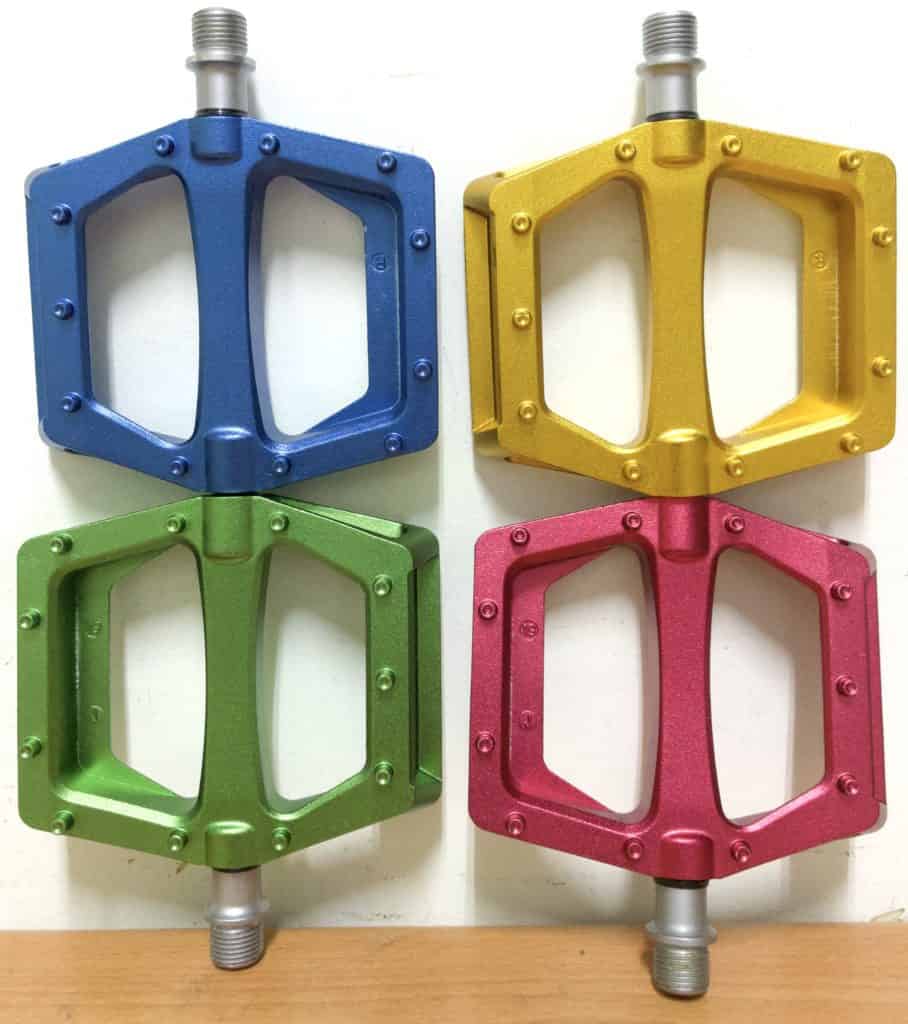
We have come up with a new take on a material that’s been around for quite some time, which we call Ducalite, that enables anodizing of a production of cast pedals. (Check out the B2B section in the flat pedals post).
Ducalite is light, strong, and can be anodized: get in touch with us for more info.
Bike Pedal Extender
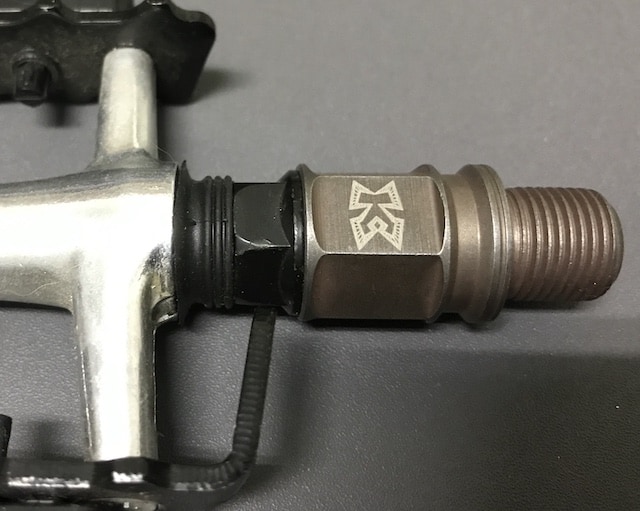
A bike pedal extender is a useful flat pedal add-on you might like to consider, particularly if you experience knee pain or require greater flexibility in placing your foot on the pedal.
Check out the article that looks into bike pedal extenders in detail.
CLIPLESS PEDALS
Clipless pedals, exclusively used on road bikes, mountain bikes, and gravel bikes, are the most confusing bike component of the lot.
Why is a pedal that clearly has brackets for shoes with cleats which clip into those brackets called clip less?
Because in the early 20th century the first modification to the original flat pedal was to clip a (toe clip) cage to the front of a pedal.
Racers derived extra drive from a foot bracing into the cage, rather than only relying on foot-to-platform friction.
The first modern clipless designs were based on quick release ski bindings which did away with the cage. Getting rid of the toe “clip” gives you a “clipless” pedal.
Road
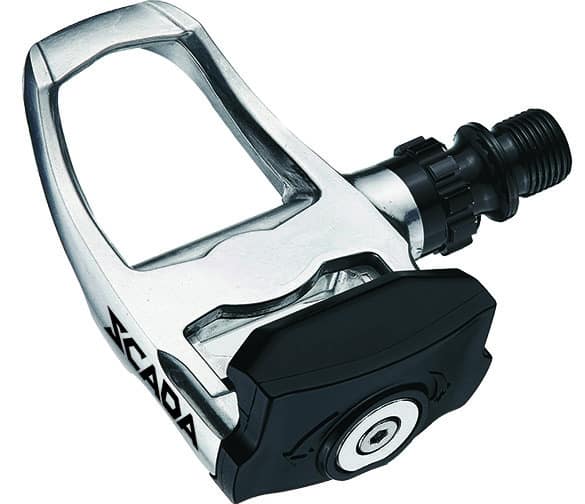
There are two main types of clipless pedals based on the pioneers in this area, Look and Shimano.
The first clipless model was produced back in 1895 in the decade that saw the explosion in popularity of the safety bike and the first bicycle boom. In 1984, Look gave the cycling world the modified ski binding which kicked off the modern era of clipless pedals.
Look’s main models are Keo and Delta, the latter being slightly broader than the former, more in line with Shimano SPD.
A road clipless pedals is, structurally, a simple triangle frame into which a thermoplastic cleat (more details in the FAQ section below), bolted to the bottom of a cyclist’s shoes, ‘clips’.
The frame’s rear is a narrow surface on a hinged spring which rotates up to a centimeter to the rear on downward force.
The cyclist slides the front of the cleat under the apex of the triangle, then pushes the base of the cleat onto the triangle’s rear spring-loaded platform which snaps over the top of it, holding the cleat firmly in the frame.
You release your foot from the mechanism by twisting sideways and pulling your shoe clear.
Walking around in shoes with these cleats attached to the bottom is awkward, and potentially dangerous on slick surfaces.
The bike pedal type that cyclists wanting to do a lot of walking around should use is flat pedals.
Or mountain bike clipless designs…
MTB
Clipless pedals on mountain bikes use a much smaller cleat recessed into a cycling shoe’s sole making walking around a snap, if you do a lot of that.
Even if you don’t need this functionality to make moving around off the bike easier, competitive mountain biking involves dismounting and shouldering your bike to get over and around large obstacles.
Otherwise the function is the same: increased leverage from using the normally ‘dead’ upstroke giving efficiency gains the longer you are in the saddle.
TOE CLIP PEDALS–the stylish and functional bike pedal type
Toe clips constitute the first modification to the original flat pedal design.
They never really went away and are a popular choice for people getting into spinning bikes, although clipless pedals do the job just as well.
Check out our very detailed post on this type of bike pedal for unique information.
BIKE PEDAL TYPES FAQ
This section details answers to questions that come up time and again. (I haven’t mentioned hybrid bike pedals which are covered in detail elsewhere).
What Are the Different Types of Bike Cleats?
Cleats are mainly manufactured out of thermoplastic.
Formed at high temperatures, thermoplastic is a rock-solid industrial plastic, able to withstand high stress and impacts.
The main stress on cleats, though, occurs over time from stroke upon stroke across many cycling sessions.
Cleats wear out mainly from walking around on rough surfaces which wear away the plastic at the points where cleats contact those surfaces.
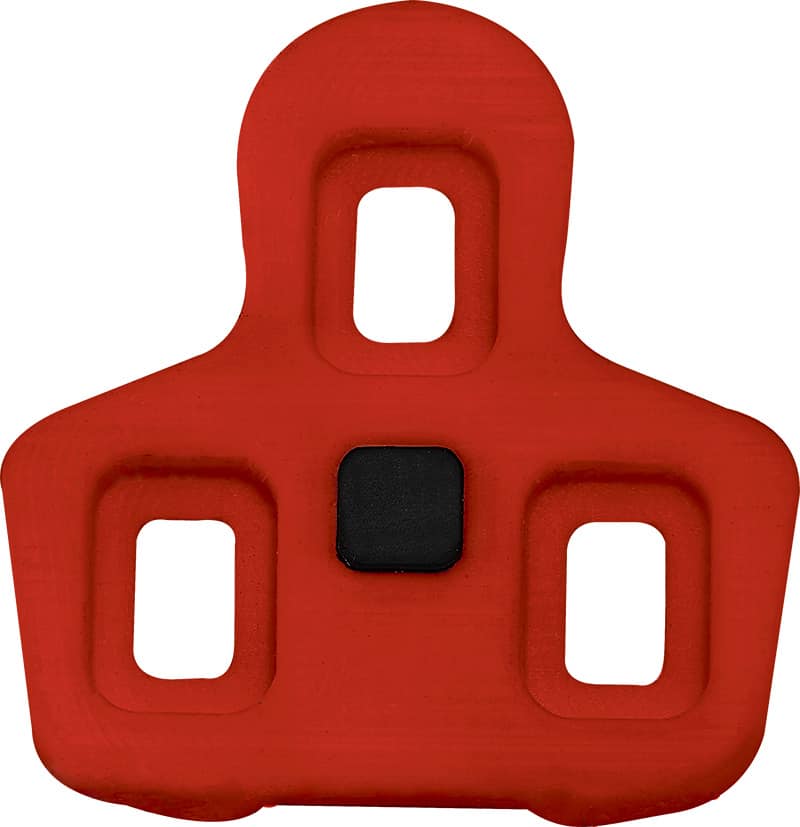
The LOOK DELTA cleat, and the closely related Keo, are both for LOOK-design road bike pedals.
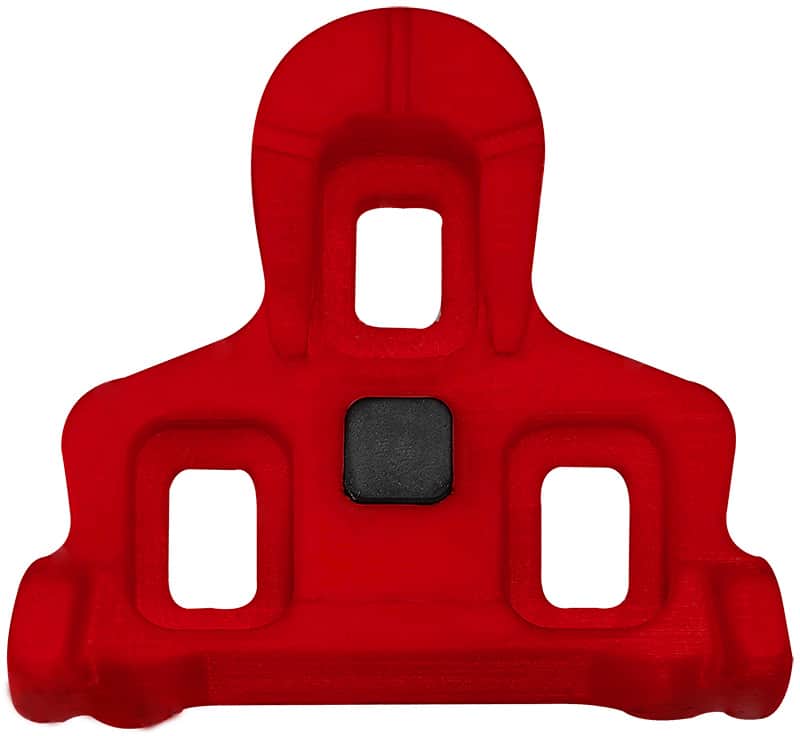
LOOK’s Keo is slightly smaller compared to the Delta.
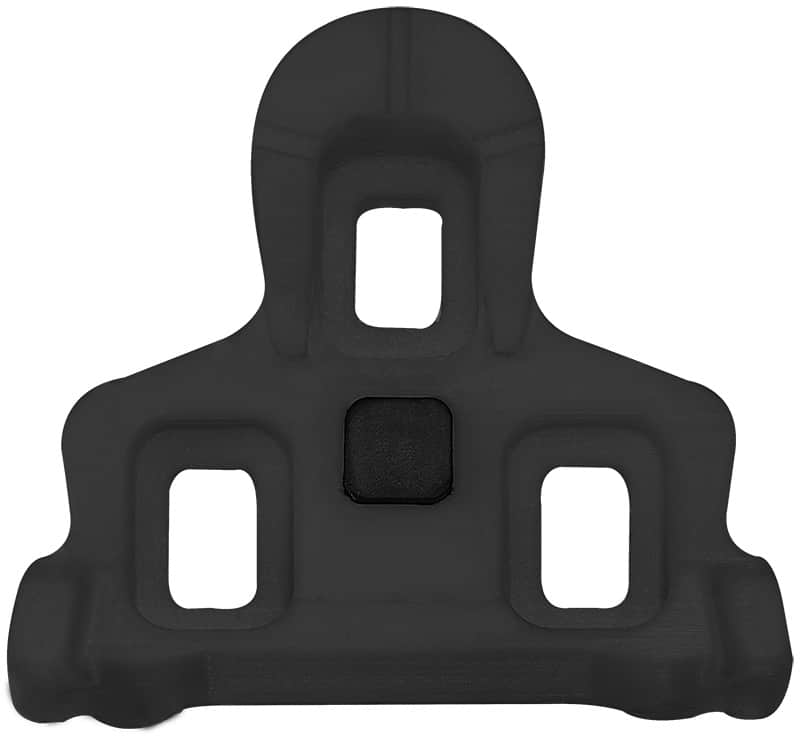
Shimano’s SPD (“SPD” means “Shimano Pedaling Dynamics”) cleat. For Road cycling, Shimano’s Road models include the 105, Ultegra, and Dura Ace pedals, each of which takes its own cleat.
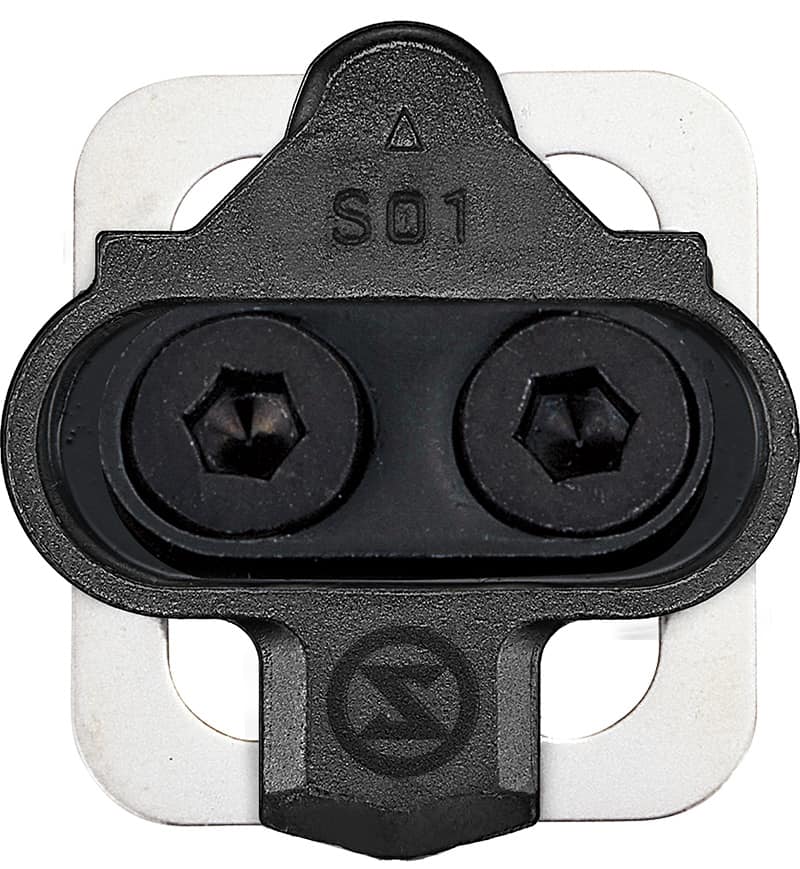
The MTB cleat—made from alloy and not thermoplastic—is designed to press down into an MTB flat pedal bracket.
Covers are available for each type of cleat.
What Is the Best Bike Pedal Type for a Road Bike?
‘Best’ depends entirely on what type of cycling you are into.
A serious sports cyclist logging long distances in the saddle and participating in grand fondos, racing or group riding, will go for clipless pedals.
Clipless pedals are more efficient than flat pedals and conserve energy over distance; the longer the distance, the greater the energy conservation effect.
If you are a recreational cyclist, especially one who likes to frequently dismount as you toddle about town or the countryside, flat pedals are the ones for you.
Do All Pedals Fit All Bikes?
Or put another way, are bike pedal axle threads all the same size?
The vast majority of mid- to high-end bikes have cranks that accept 9/16” axle threads. If you have a bottom bracket and two cranks, 9/16” is the one.
Bikes with a one-piece crank generally take 1/2” threaded pedals, unless you are buying second hand and the previous owner has customized their setup.
How Do You Screw in a Bike Pedal?
A lot of your bike’s components have bolts; and bolts have threads which hold parts together.
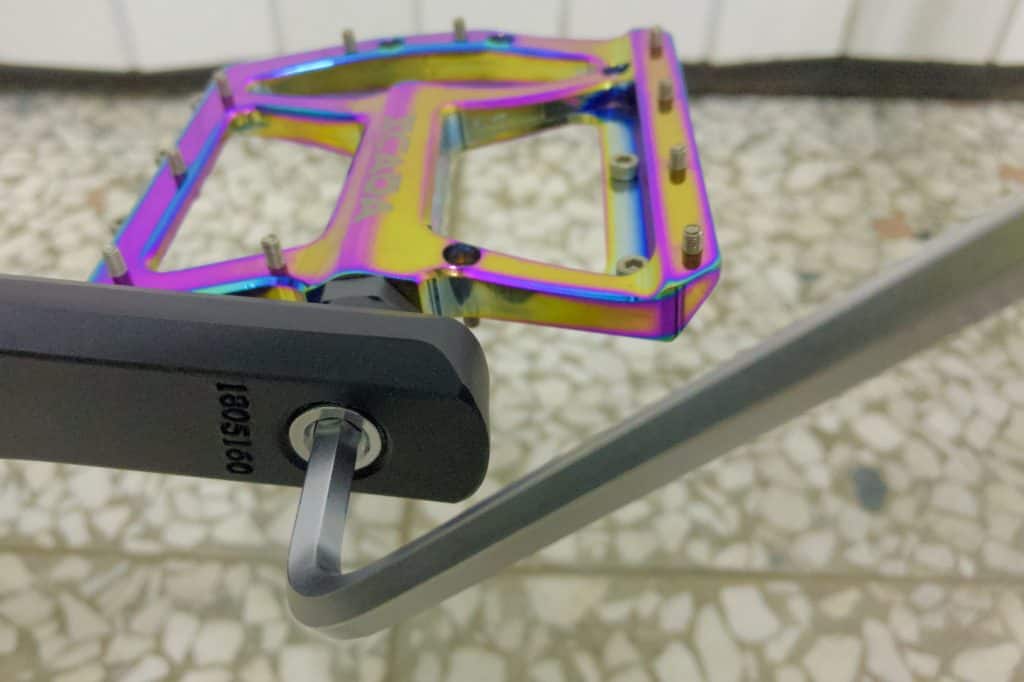
While threads are strong, way stronger than any stresses a cyclist brings to bear, they are weakest during the process of being mated to each other ie. when you are threading a bolt into position.
Your pedal is a type of bolt; the crank (arm) is a type of ‘nut’ to the bolt, and as with all bolts take great care when starting off a pedal install. You must avoid cross threading the pedal axle into the crank.
A light application of sewing machine oil to the axle threads makes for easy rotation as you turn the axle into the crank. Some mechanics use a little grease instead of light oil which is also fine.
You’ll most appreciate lubrication, though, when you remove a pedal. They’re super tight in the crank and take a good measure of force to break them free. Oil helps a lot.
You can stand your bike upright using a bike stand or leaning against a wall. Or the way most of us worked on our bikes when we were kids: turn it over onto the seat and handlebars.
WRAP UP
That’s our broad overview of the main bike pedal types covering the range of cycling needs.
For an in-depth look at each type, head over to Scada’s blog page.
For a primer on the parts making up a bike pedal, this post has the details.